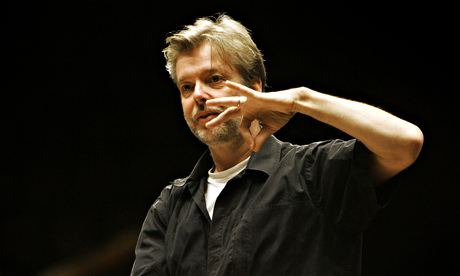
Schumann's Violin Concerto, unheard for its first 84 years, still hovers on the margins of mainstream concert repertoire. It is not hard to grasp why. Even in more committed performances than this one by Renaud Capuçon and the London Philharmonic under Jukka-Pekka Saraste, it suffers from the fact that the material is often densely written and the soloist too often subsumed for long periods. Yet the underlying tension between the soloist and the orchestra is powerful, and it is tempting to hear the concerto as an embodiment of Schumann's mental decline when he wrote the piece in 1853. Capuçon's way of playing it – clipped and precise yet seemingly locked within his own world – enhanced this view, but Saraste's unwillingness to grip the orchestral structure made for a more diffuse rendering than this problematic piece deserves.
Saraste was more engaged, after the interval, in Bruckner's Eighth Symphony, played in the Haas edition of 1939, but never to wholly persuasive effect. Like Mariss Jansons in his much-debated Bruckner performances in London last week, though without the Concertgebouw's shining sound at his disposal, Saraste adopted a press-on-with-it approach in which paragraphs were routinely elided in the cause of dramatic excitement. Tastes differ, but Saraste is undoubtedly representative of a style in regard to Bruckner that seems to be winning out as his symphonies become less specialist repertoire than they once were.
But it does not sound Brucknerian in the older, more profound and more effortful way, and this remorselessly linear approach is particularly questionable in the case of the C minor Eighth, which is even more suffused with struggle on the grand scale than any of the composer's completed symphonies. The result, in Saraste's hands, was that the moments of crisis, notably at the end of the opening movement and the end of the adagio, were too easily achieved. An indisputable benefit of a quicker approach, however, is that the finale coheres more easily, and with the LPO brass in potent form, Saraste reached the final C major blaze in commanding style.
• Did you catch this show – or any other recently? Tell us about it using #gdnreview

